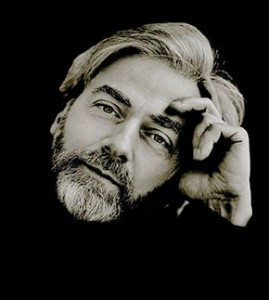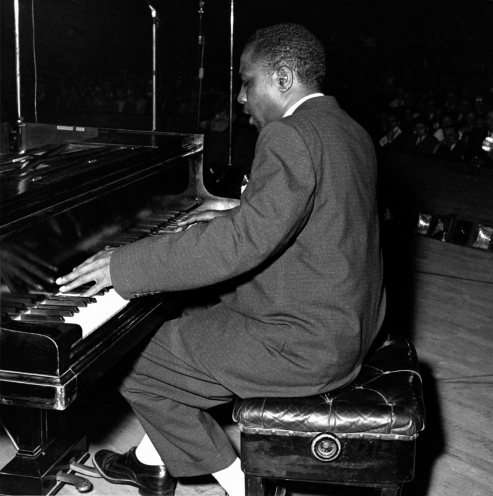 Amidst the brouhaha over Polish pianist Krystian Zimerman’s anti-U.S. protest during a recital at Disney Hall, arts•meme was struck by this information nugget in Mark Swed’s L.A. Times story:
Amidst the brouhaha over Polish pianist Krystian Zimerman’s anti-U.S. protest during a recital at Disney Hall, arts•meme was struck by this information nugget in Mark Swed’s L.A. Times story:
Zimerman is a magnificent obsessive. He travels with his own Steinway, is his own piano technician, and even his own truck driver. He typically spends half a year devising a concert program and will do anything to achieve the sound he desires. Three years ago at the Irvine Barclay Theatre, he substituted Gershwin for Chopin because the Transportation Security Administration had held up his piano at the airport and he didn’t have time to practice to adjust it properly. An earlier piano was destroyed by Homeland Security at JFK airport because officials were suspicious that its glue could be an explosive in disguise.
Zimerman’s perfectionism about his piano brings to mind Thelonious Monk. One of our greatest and most innovative jazz artists, Monk famously developed his chops by practicing on the untuned, or broken, pianos of bars, whorehouses, and other dives. In fact, Monk’s sound — replete with sound gaps, disjunction, and dissonance — stems from playing those compromised instruments and specifically from their missing piano keys. He made art from imperfection. What a creative genius.
We always picture Monk twanging on a piano like the upright pictured in this album cover. Try that, Krystian Zimerman!
In the photo at right (click on it for detail) Monk plays a more proper piano in a  Salle Pleyel concert in Paris in 1954.
Salle Pleyel concert in Paris in 1954.
Click here for John Coltrane and Monk playing “Ruby My Dear,” one of my favorite Thelonious Monk compositions.
Another great pianist who endured the hardship of difficult performance conditions was Sviatoslov Richter.
Touring the impoverished schools and churches of the Russian hinterland during the Stalin era, Richter managed to pull ecstatic, transcendental music from the most miserable of pianos.
In a classic man-bites-dog story, here is Sviatoslov Richter assaulting a keyboard.
photo credit: marcel fleiss

Monk learns to maximally utilize defective pianos and Zimerman learns to perfect his piano to the maximum. If we recall that Zimerman learned his technicality in hardware while working in a piano workshop “to survive” (in his own words) when he was young, I only can say what a valuable hands-on education! Elder Zimerman is known to have had their piano tuned every three weeks lest wrong sounds might hurt young Zimerman’s perfect ears. I appreciate that someone like Zimerman exists to strive to perfect sounds to achieve the music — art he desires. He said that all his technicalities are tools to study music. I hope that he will make truly new sounds — composition.
The Monk photo made me think of a time way back, when Ramsey Lewis was playing at the little and very cool “It” Club on West Washington Blvd. (ok, this was way back). He sat on a piano bench topped with a phone book, dangerously close to the edge of the platform. As he played, he kept inching back and took a tumble backwards into the first row of tables. He wasn’t hurt, and got back up and finished his set –which included my favorites pieces at the time, “Love For Sale,” “Satin Doll,” and “Green Dolphin Street.”
The Richter video was wonderful, but I wish the camera had been behind him at least part of the time. I kept turning my head watch his hands.
Thank you for pointing me towards that last video of Richter. Amazing, and love the camera angle with that beautiful rug.
Zimerman is a stellar artist who I know from recordings and one live experience at Pittsburgh’s Heinz Hall (Brahms 2nd Concerto, perhaps 10 years ago.) But I’d trade lunch AND a private piano coaching with him (on one of his funny smelling Steinways) for 10 minutes with Monk or Richter, humble and eccentric geniuses, both. Richter’s formidable technique was always in service to a searing musical intellect. Even in a piece as blatantly virtuosic as the Chopin Etude #4 (YouTube link) that unrelenting blaze of 16th notes remains middleground to the pointillistic melody–each changing hands with effortless clarity. Pretty great. Re: Monk, words are pointless, of course. If you’ve not seen the 1988 docu. ‘Straight, No Chaser,’ check it out–some terrific and bewildering footage of the man. Thanks artsmeme!